When SIG Sauer won the Army handgun contract in 2017, the gunmaker picked up hundreds of millions of dollars in annual revenue for the foreseeable future. It also picked up some bragging rights and the hearts and dollars of every gun owner who lined up for a SIG P320, known by its government designation as the M17 pistol, because it became “the gun the military uses.”
For the handgun world, the XM17 Modular Handgun System (MHS) competition was like combining the Super Bowl and the World Cup into a single, winner-take-all event. It pitted the best gunmakers against each other and forced them to innovate until they reached extremely high standards. And the winner’s design became the standard by which all other handguns are compared, for better or worse.
Today, that standard is the SIG M17 pistol. The spot has been held by very few guns that most would call modern firearms, and only two semi-automatics: the hallowed M1911 and the M9, aka the Beretta 92FS.
Of course, nothing is necessarily wrong with the seven other pistols that lost to SIG in the MHS competition. Other duty-oriented professionals and civilian buyers alike still use and even prefer some of them. But it raises the question: What made the SIG M17 pistol better?
Replacing the Aging M9
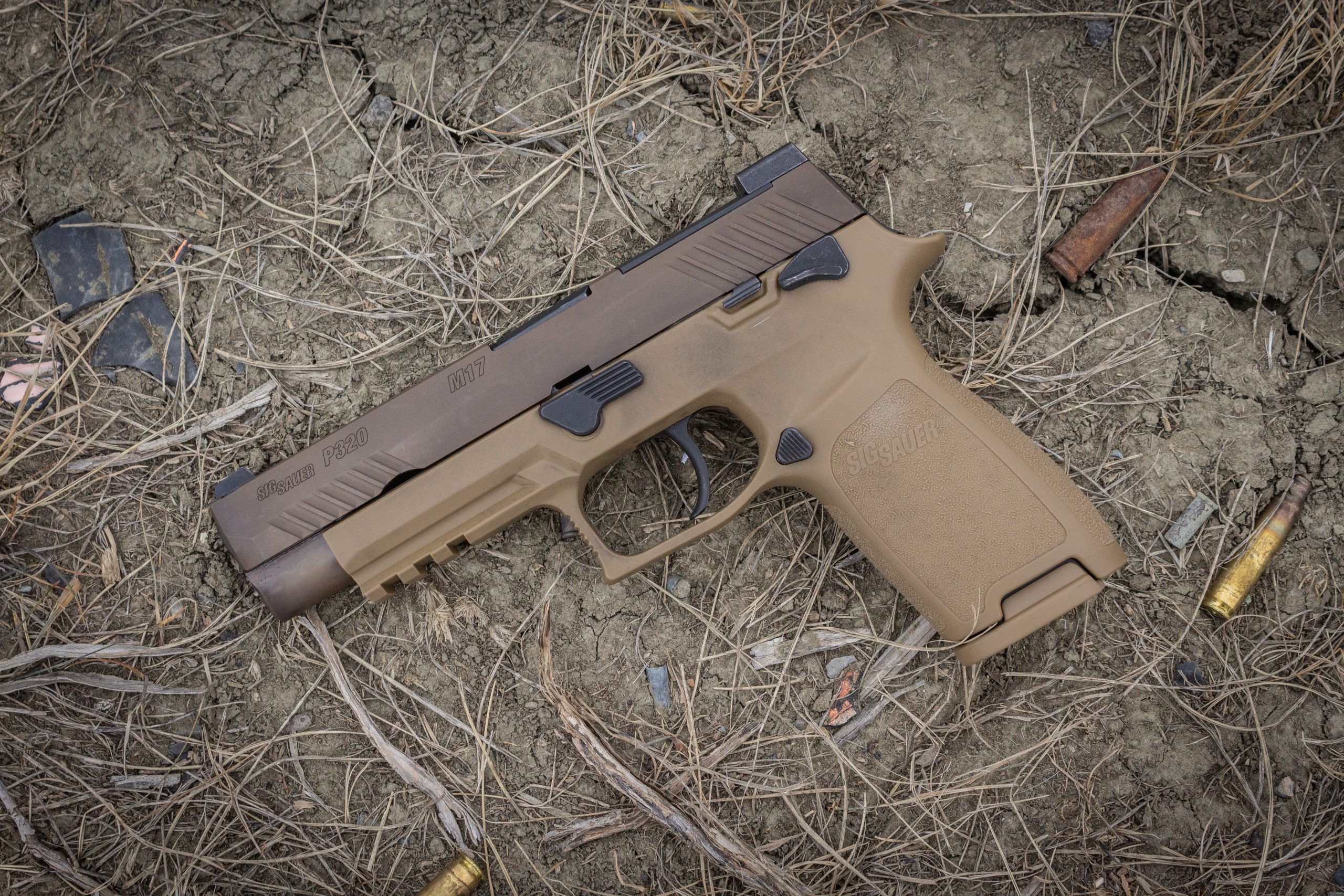
The Army launched the MHS competition in 2011 to find a replacement for the aging 9mm Beretta M9. The pistol had been in service for nearly 30 years, and instead of replacing units and parts, or adopt the latest version of the pistol from Beretta, the M9A3, the Army decided to upgrade and start fresh.
The Army, followed by the rest of the U.S. military, chose the M9 as its service pistol in the mid 1980s to replace the M1911 after 70 years of service for several reasons, primarily because of compatibility and performance.
The M9 was chambered in 9mm, and the significance of that is twofold. First, it’s a NATO cartridge, so adopting the M9 would mean compatibility across primary rifle cartridges (5.56 and 7.62) as well as handguns and submachine guns in 9mm. Of course, 9mm ammo was easily sourced at the time and common through much of the world.
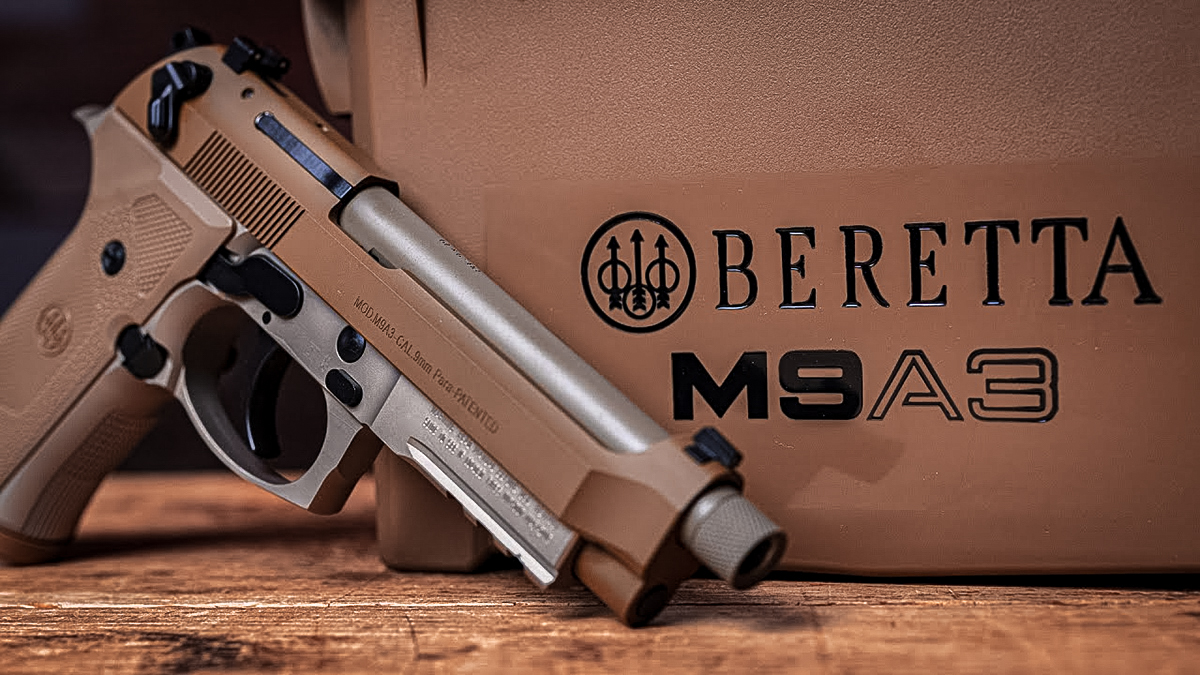
From a tactical perspective, the M9’s double-stack magazine held 15 rounds compared to the .45 ACP M1911’s standard 7-round mag. That was the other powerful motivator for the switch.
If course, the M9 endured a trial of it’s own during the Joint Service Small Arms Program in the late 1970s and early 1980s. When the dust cleared, the military chose Beretta’s 92FS over the Heckler & Koch P9S and VP70, the Colt SSP, the FN Herstal Hi-Power, The FN Fast Action and FN Double Action, the Star Model 28, the Smith & Wesson 459, Walther P88, and Steyr GB. They all were also compared to the M1911A1.
There wasn’t anything wrong with the M9, but the platform had been around since 1976, and the U.S. Army’s needs had changed. In the procurement announcement, the Army said it wanted better accuracy, enhanced durability and reliability, better ergonomics, modularity, and improved safety features. In other words, a modern duty pistol — and the modular aspect was a key component that the M9A3 simply didn’t have.
READ NEXT – FN Introduces ‘Big-Bore’ Pistols: New FN 545, FN 510
The MHS Handgun Competition and Players
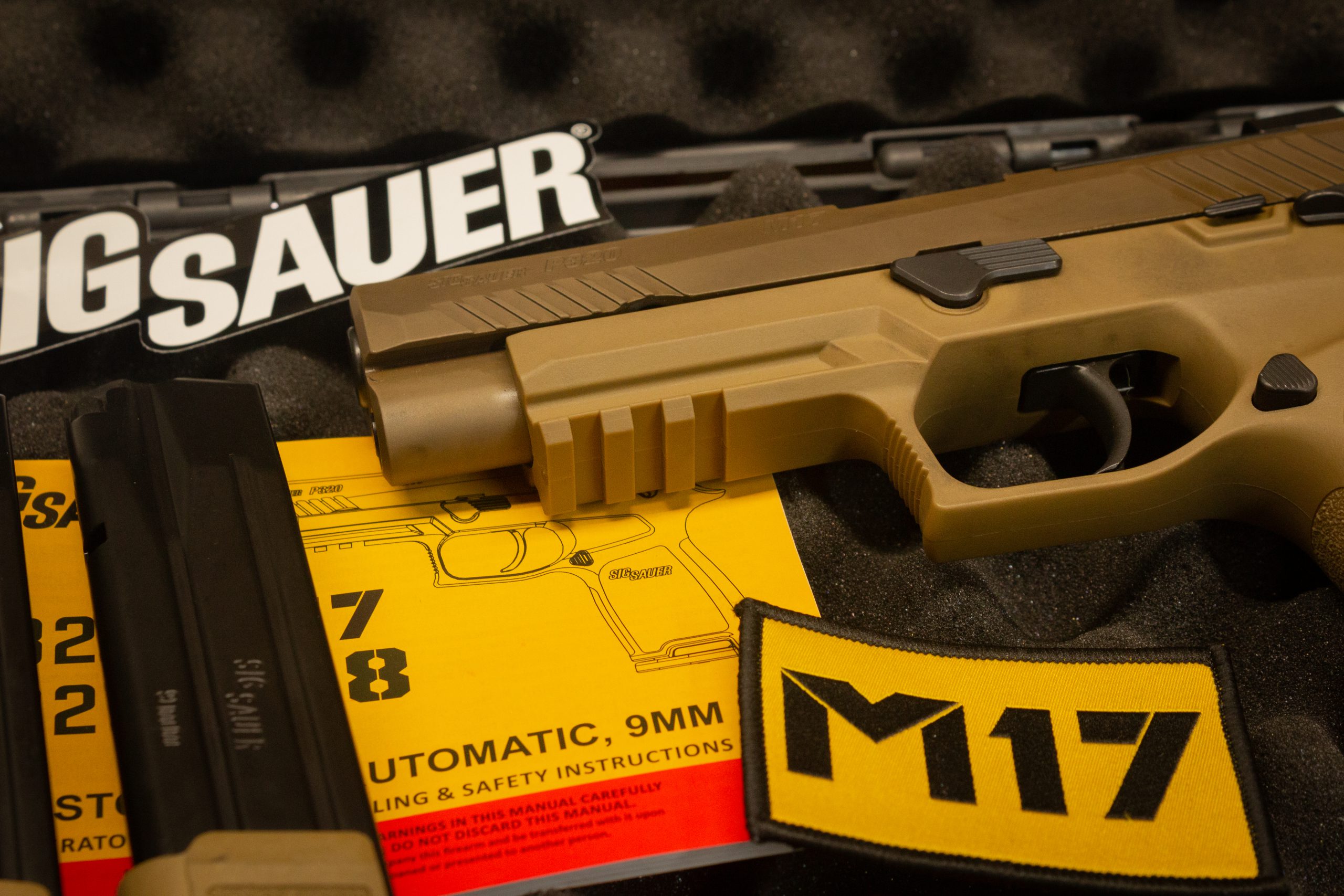
On paper, the MHS handguns all look almost identical. Each one featured a polymer frame, an accessory rail under the barrel, manual and internal safeties, and replaceable grips, and they were all chambered in 9mm.
While most were striker-fired and some were hammer-fired, specific modular designs stood out. With some, you could replace the slide and grips to transform it from a full-size to a compact pistol, and vice versa. But some were truly modular, while others were made to be more customizable.
The eight designs submitted to compete include:
- Beretta APX — Utilizes a removable serialized chassis
- CZ P-09 MHS — Hammer-fired double-action-only
- FN 509 — Striker-fired design with interchangeable backstraps
- Glock 19 MHS — Classic Glock 19, but with manual thumb safety and lanyard loop
- Smith & Wesson M&P9 — Interesting partnership with F-16 builder General Dynamics
- KRISS USA Sphinx SDP Compact — Double-action/single-action design with hybrid metal/polymer frame
- STI-Detonics STX — Truly modular design with metal chassis that accepts different slide lengths and grip sizes
- SIG P320 — Modular design that uses a fire control unit (FCU), which can be swapped into any-size grip module
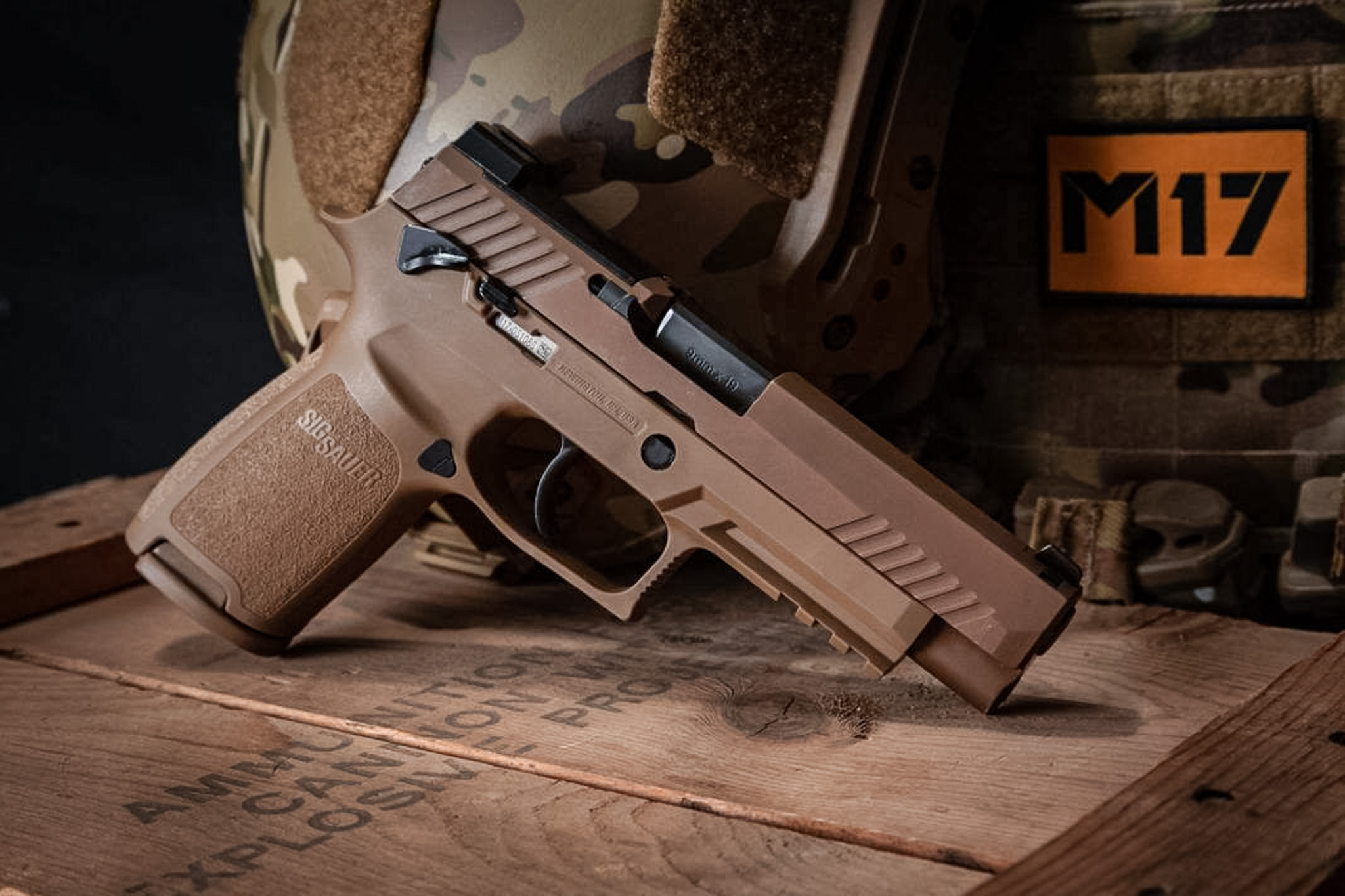
What separated the wheat from the chaff was performance. The Army tested the guns to see how well they endured exposure to dust and sand, extreme temperatures, and salt water. Testers also dropped the guns from various heights onto various surfaces and torture-tested them on the range with different types of ammo.
After all the abuse and shooting, the SIG P320 emerged victorious based on how it performed, its value, and because it checked every box int he contract. In an Army report, the SIG design had very few issues after several range sessions in which more than 12,000 rounds were fired. In fact, it had a 93% and 94% probability of completing a 99-round mission without a single stoppage.
It was chosen — with a bit of controversy — as the XM17 and XM18, a full size and compact pistol that eventually became the M17 and M18.
GOOD GEAR – Conquer Your Taste Buds With BRCC’s AK-47 Espresso Roast
The SIG M17 Pistol Is Introduced to the World
Like the M9 before it, the adopted SIG M17 was a product of its time and made by a European gunmaker. Based on the SIG P320, it’s a polymer-framed, striker-fired pistol that’s fully modular, so you can customize grip size, slide configuration, and barrel length, but it also had a few distinct differences for military purposes.
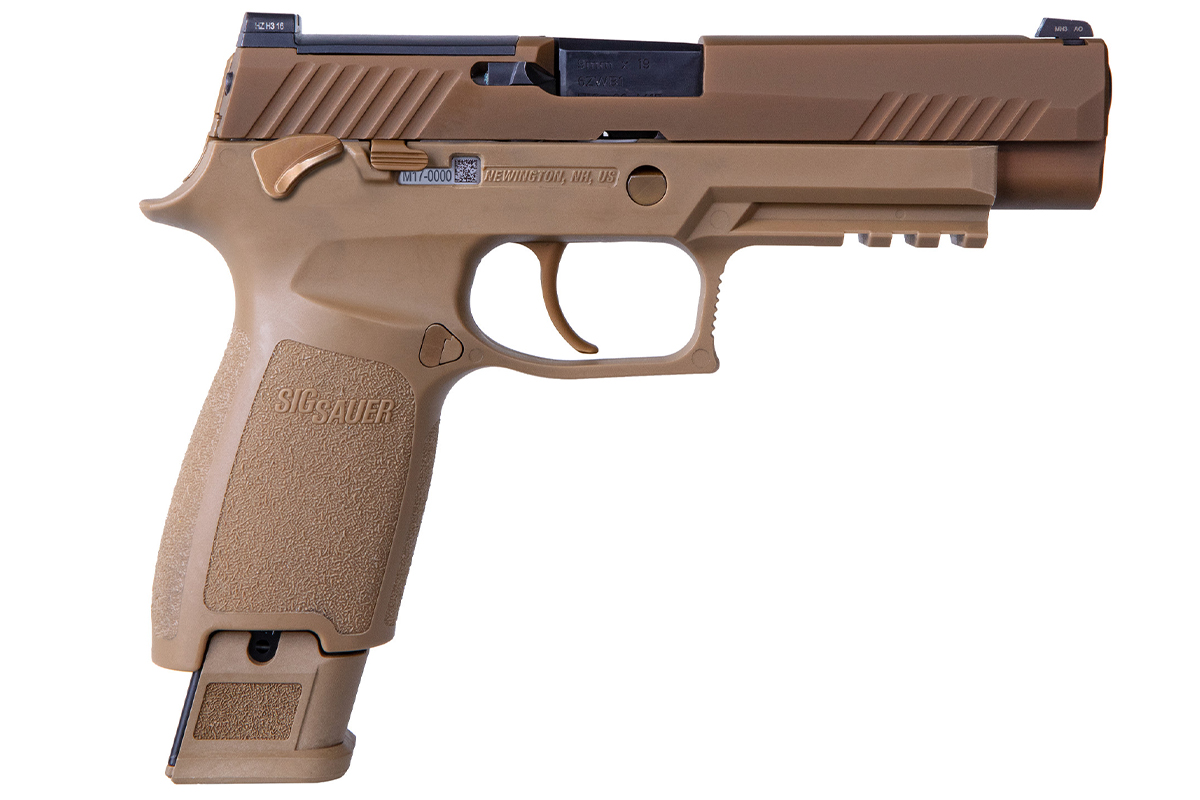
The M17 has a coyote tan finish, ambidextrous manual safety controls, and a loaded chamber indicator, which allows you to check to see if the gun is loaded without performing a press check. Additionally, the M17 has standard night sights and the slide is milled for red dots and comes with a removable optics plate.
Also like the M9, which had to deal with chronic cracked slides in the earliest examples, the M17 had some hiccups, including challenges to the reliability of the design. Specifically, competitors argued that the Army failed to complete testing of SIG’s design and that the design itself had drop-safety issues (meaning an internal safety mechanism was allegedly faulty).
But further government testing revealed consistency in the results for the M17.
“The XM17 with ball and jacketed hollow point ammunition demonstrated 93 percent and 94 percent probability, respectively, of completing one 99-round mission without a single stoppage,” the Army said in the 2018 report.
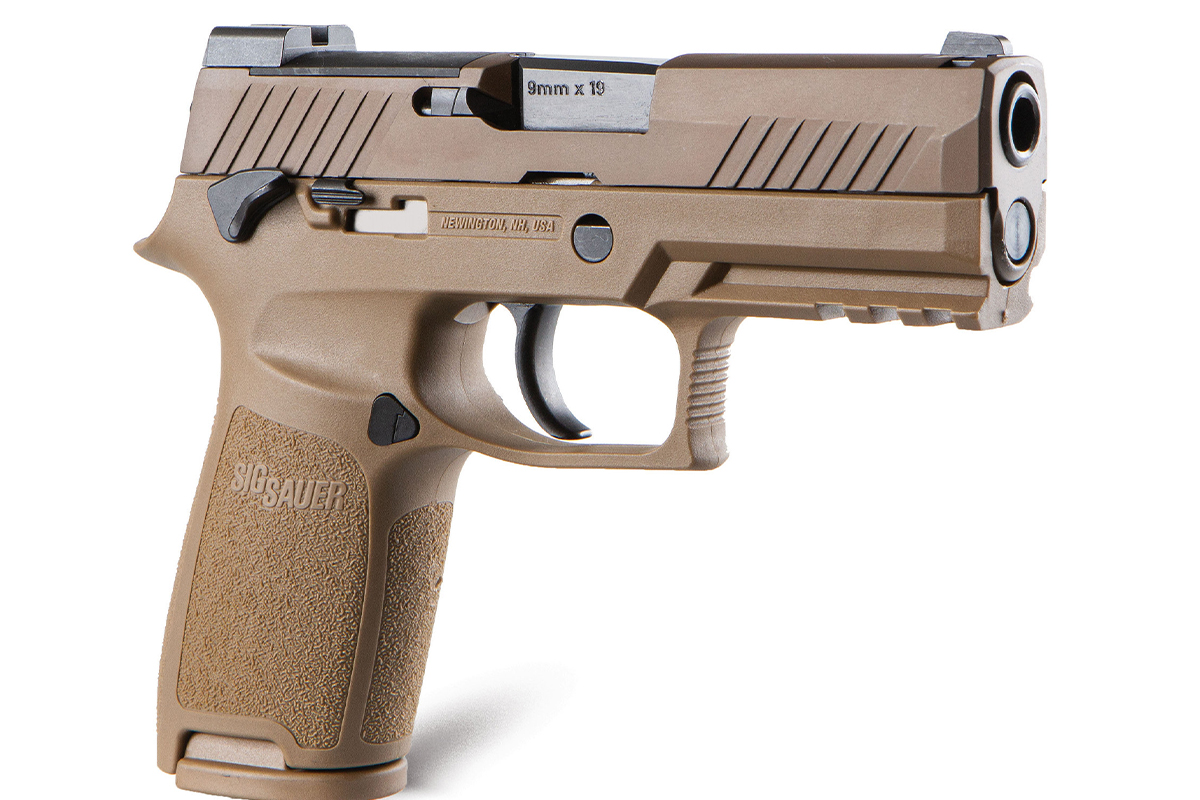
As for the drop-safety issue, SIG said it was limited to the civilian P320 and not the M17. In a voluntary upgrade notice, SIG explained that its MHS pistol was a different variant than what’s sold to the public. “It has passed the U.S. Army’s testing protocols,” the company said.
Additionally, a Congressional Research Service report examining the MHS competition found that the process is “a signal example of all that can go wrong with defense acquisition.” But the government got the SIG M17 at a competitive rate. For some $580 million, the Army gets more than 500,000 pistols and 500 million rounds of 9mm ammo.
The M17 Pistol on the Civilian Market
The SIG P320 has been on the civilian market since 2014 and was almost immediately successful in its own right, but the want and need for the military model was also immediate as soon as it was announced as the MHS winner.
SIG satisfied these customers by releasing the M17 and M18 to the public. This was great news for those collectors looking to have one of the newest military pistols on the market, as well as those simply looking for a great, highly configurable handgun.
SIG truly revolutionized the handgun world when they introduced the Fire Control Unit (FCU) chassis systems in the P320. The chassis holds all of the fire control parts of the gun and it bears the firearm’s serial number, meaning that it’s the only part requiring a transfer of ownership. Frames, slides, barrels and all other parts of the gun can be bought and sold as parts without background checks or transfers, making the P320 more readily customizable than any pistol platform before it.
This ability to be highly configurable has been a driving factor behind the P320’s success, and SIG has released many different models and options since.
SIG now offers 25 different factory models of the P320, including the M17 and M18, but the configurations including aftermarket components are endless. SIG also offers the unique P320 Concierge Service, which they call “The Ultimate Experience.” This service allows you to build the exact pistol you want in real-time, seeing a visual of it as you go. Pick any slide, frame, or barrel combination you want, and even add engraving.
We have no way of knowing how long the M17 pistol will remain in service with the U.S. military and if it will live up to the longevity of its two predecessors, but the platform’s popularity has not waned. It would seem, as long as the military and NATO sticks with the 9mm, the M17 and M18 will be here to stay.
READ NEXT – SIG P320 and P320 Spectre Comp: Breakdown and History



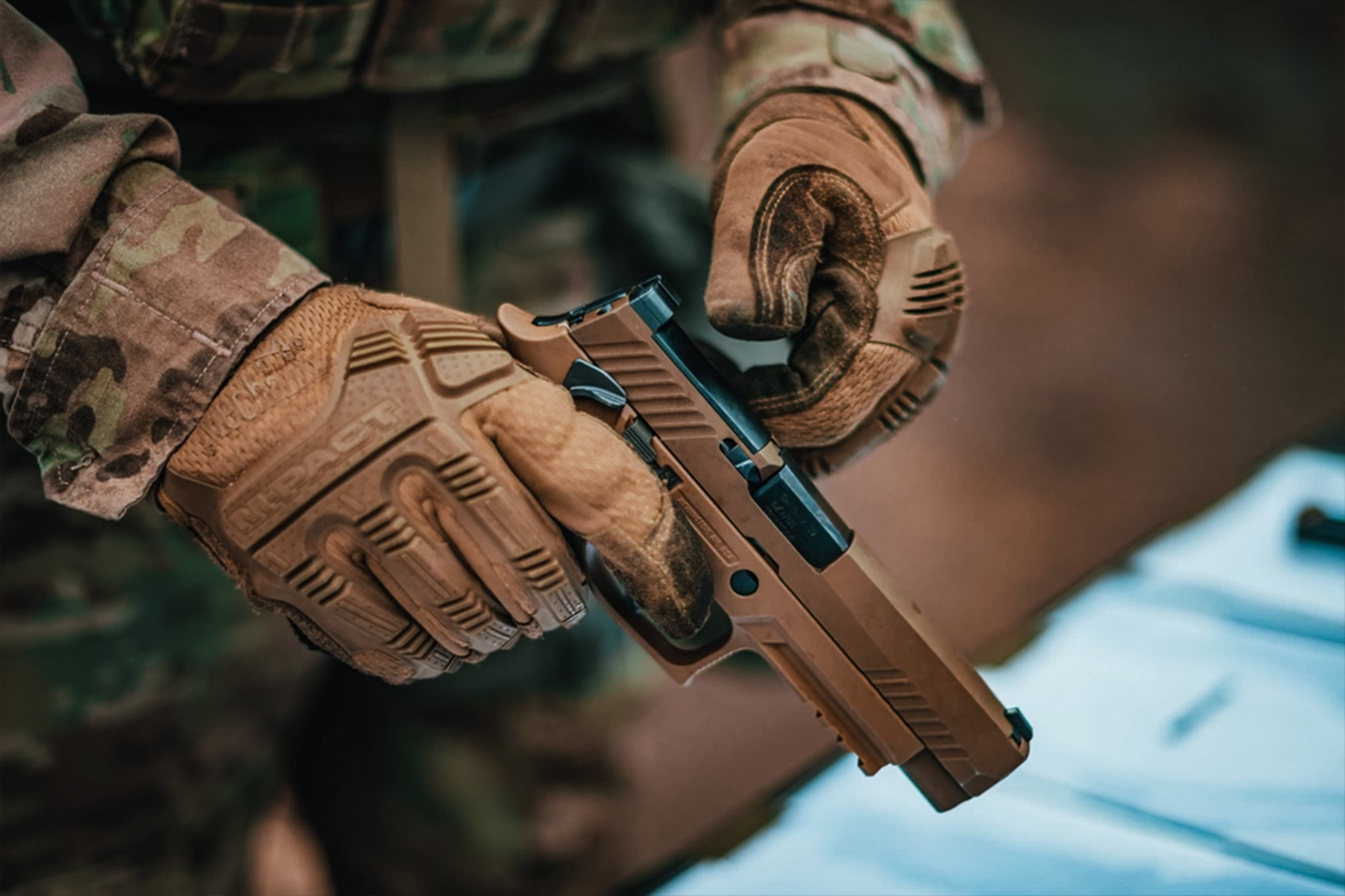

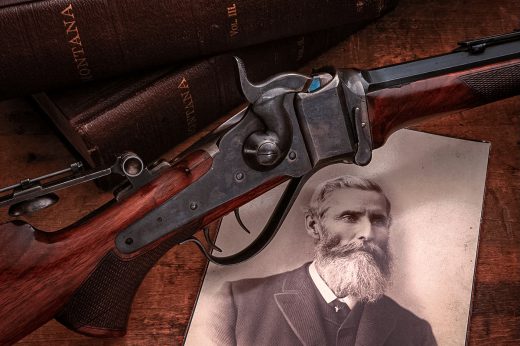

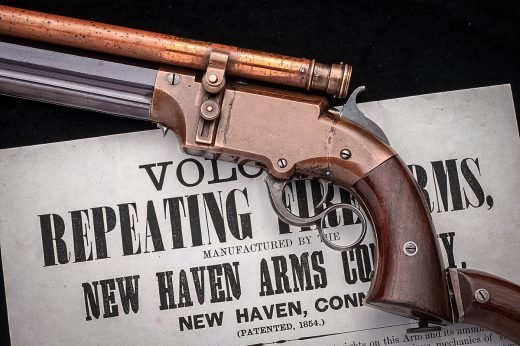


Comments